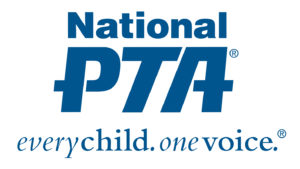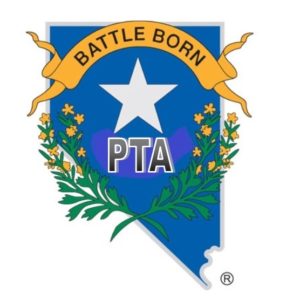PTAs hold regular general membership meetings to allow members to set goals, choose programs and decide how to make their voice heard. The president who learns how to manage meetings well improves the PTA’s ability to achieve its mission.
Virtual Meetings
Virtual Meetings are permissible as long as all bylaw requirements are met.
All members must receive timely and proper notice, receive all needed access details and have the ability to fully participate in the meeting.
For example, Facebook Live would not be permissible as all participants are unable to actively engage in the meeting but a virtual meeting on a platform such as Microsoft Teams, Google Meet, GoToMeeting, BlueJeans or Zoom (if the size of your membership is able to be accommodated) would be permissible.
Many of these options are providing free services currently or are available inexpensively for non-profits via TechSoup.
Meeting standards such as an agenda, recording minutes and parliamentary procedures should be followed.
HOW TO CONDUCT MEETINGS
The president chairs all meetings of the executive committee (if applicable), board of directors, and general membership.
The key to conducting productive meetings is to be well prepared. Before the meeting, the president should prepare an agenda; contact everyone who has a report to give, such as committee chairs, officers, student members, or school staff; and make sure that materials and arrangements are complete for each item on the agenda.
Meetings should not be more than about an hour long; remember to be respectful of everyone’s time.
At every meeting, the secretary takes minutes and presents the minutes from the previous meeting. Similarly, a Treasurer’s Report is required to be given and available for members’ review.
Chairing a meeting requires skill in relating to people with various backgrounds and different points of view. To work more effectively with others, you should:
Remain Neutral
Encourage all members to enter into the discussion. Listen
respectfully and ask clarifying questions.
Point out areas of agreement between speakers. Help the group to see issues in terms of what is best for children and will help accomplish the goals of PTA.
Encourage positive action. Urge members to learn the facts and decide what can be done.
- Recognize that no one can please everyone all of the time. Keep a sense of humor and friendly attitude.
PARLIAMENTARY PROCEDURE
PTA meetings are conducted according to parliamentary procedure, which is simply a set of rules for conducting organized meetings. Following parliamentary procedures allows the PTA to accomplish its goals fairly while protecting all members’ rights. It calls for you to:
1) Consider one thing at a time,
2) Follow the rule of the majority,
3) Ensure justice and courtesy for all and partiality for none, and 4) Reserve the right of the minority to be heard.
The president should appoint a parliamentarian and keep a copy of Robert’s Rules of Order Newly Revised (current edition) handy at all meetings. Asking for help is not only allowed, it is expected and encouraged.
With practice, parliamentary procedure helps PTA members make tough decisions together and remain friends in the process.
Sample Agenda and Meeting Flow
Call to order – 7:00 p.m.
The president stands, raps the gavel once, and calls the meeting to order:
“The meeting will please come to order.”
Opening ceremonies (optional)
Recite the PTA Mission along with any inspirational messages.
“PTA’s mission is to make every child’s potential a reality by engaging and empowering families and communities to advocate for all children.”
Review and Approval of Minutes Minutes of the previous meeting are provided at each meeting for review
“Are there any corrections?” “The minutes stand approved,” or “The minutes stand approved as corrected.”
Report of the Treasurer
No motion is needed for adoption unless it is the report of the completed Financial Review.
“We will have the treasurer’s report.” “Are there any questions?” “The report will be filed for Financial Review.”
Letters or Communication
These are read by the secretary and are acted on as they are read if action is required.
“Are there any communications?”
Report of Board of Directors (or Managers)
A summary report (not the minutes) of the last board meeting is read for the information of the members.
Recommendations should be voted upon one at a time, the secretary moving the adoption of each one.
“We will hear the report of the board of directors by the secretary.” “You have heard the recommendation. Is there discussion?”
Follow the steps of a motion.
Reports of Standing Committees
Before the meeting, the president consults with chairs and officers to find out which committees have reports to give. At the meeting, the president calls for the committee’s report (not chairman’s report).
If the committee has made a recommendation, the person making the report moves its adoption. (No second is required since the motion is made on behalf of the committee.)
The chair calls for discussion and/or follows steps of a motion.
“We will hear the report of the ____ committee given by _____ chair (or other title).” “Are there any questions regarding the report? If not, the report will be filed.”
Reports of Special Committees
These can be progress or final reports. Upon completion of its specified duties, the committee ceases to exist.
Reports are handled in the same manner as those of standing committees.
Additional Reports
These can be reports from staff, students, principal, or other volunteers.
Unfinished Business
Minutes of the previous meeting will indicate any unfinished business.
Note that unfinished business is not called “old” business.
New Business
The chair or members may bring new business before the association.
A motion is necessary before discussion and vote.
Program (a program is not required at every meeting)
We encourage a program to inspire community attendance and family engagement. The president introduces the program chair, who presents the program. The meeting is not “turned over” to the program chair, nor does the program chair “turn the meeting back” to the president.
“The program will be presented by ___________, program chair.” “Mister/Madam President, this concludes the program.”
Announcements
The date of the next meeting and important activities should be announced. If there is a social time following the meeting, this should be announced.
“Are there any announcements?”
Adjournment – 8:00 p.m.
No motion is necessary to adjourn. Rap the gavel once.
“Is there any further business to come before the meeting?”
“The Meeting is adjourned.”
FREQUENTLY ASKED QUESTIONS
How do I make a motion?
Only current PTA members may make motions, discuss, and vote. Follow these eight easy steps and you will be right on target.
- Obtain the Floor : Member rises and addresses the chair. “Madam/Mister President.”
- Assign the Floor : The chair recognizes the member by nodding or stating their name.
- Make the Motion : “I move that…”
- The Motion is Seconded : “I second the motion.” If there is no second after the chair asks for one, the chair says, “Motion fails for lack of a second.”
- Chair States the Motion : It has been moved and seconded that…”
- Debate or Discussion : “Is there any discussion?”
- Vote : “All in favor say ‘aye’, all those opposed say ‘nay’.”
- Chair Announces Results : “The ‘ayes’ have it and the motion is carried and we will…” or “The ‘nays’ have it and the motion fails.”
Does the president vote?
The president is a member of the voting body and has the right to vote on all questions. In smaller meetings, where there are not more than about a dozen members present, the president may exercise the right to vote. However, the president is required to remain impartial and should refrain from voting in meetings of more than about a dozen members, including board members and/or general PTA members.
Can the principal be an officer?
Yes. However, all officers have term limits and must be elected. It is suggested that the principal not be an officer so he/she will be able to continually serve on the board of directors/managers and not be subject to election.
What is a Parliamentarian and what does she/he do?
The Parliamentarian is an individual whose primary duty is to advise the presiding officer on questions of parliamentary procedure. The president should appoint a parliamentarian. It is recommended that the president select someone knowledgeable about the association and familiar with rules of order. The parliamentarian should sit near the presiding officer for convenient consultation. The presiding officer may call on the parliamentarian at any time for advice. The parliamentarian does not speak unless given permission by the presiding officer.
When can a Parliamentarian vote?
The parliamentarian does not vote on any question except in the case of a ballot (written or paper) vote.
What types of meetings should our PTA have and how often should they each meet?
There are three types of meetings: executive committee (if one is listed in the bylaws), board of directors/managers, and general PTA membership meetings. Your bylaws will specify the minimum number of general PTA membership meetings, whereas the president and board of directors will set their meeting schedules.Who schedules meetings for the local PTA?
The president! However, consult with the principal, officers and board to identify mutually convenient dates and times for meetings. Establishing a schedule in advance, even if it changes later, helps everyone involved.
Please email leadership@nevadapta.org with questions or for more info.



